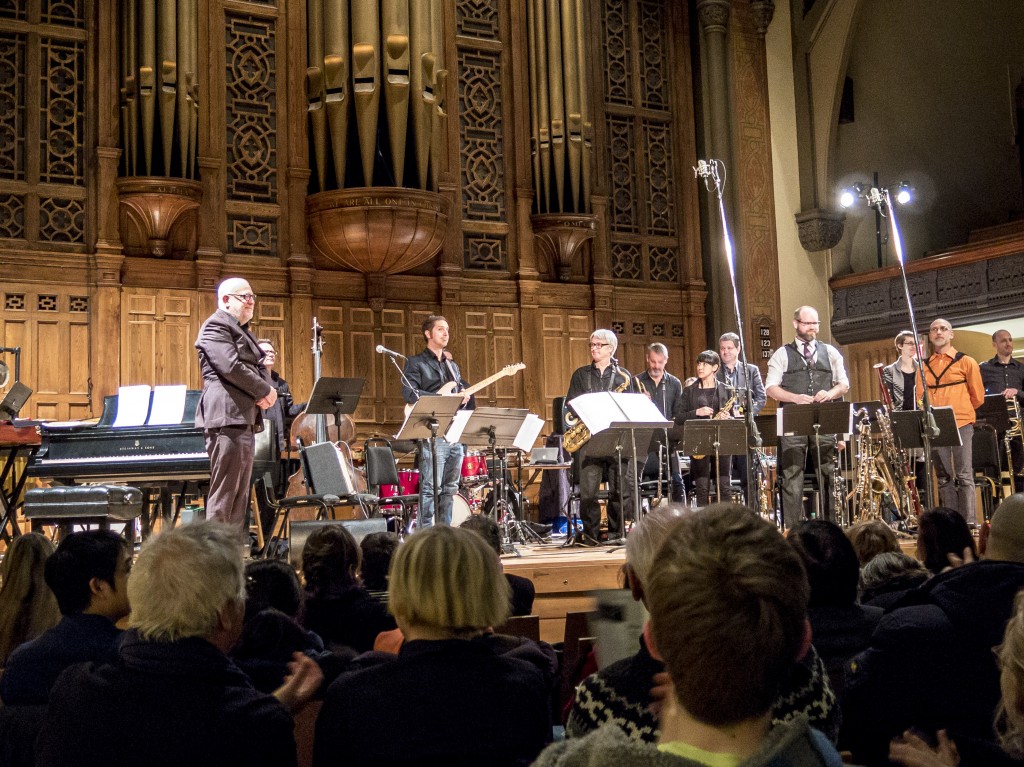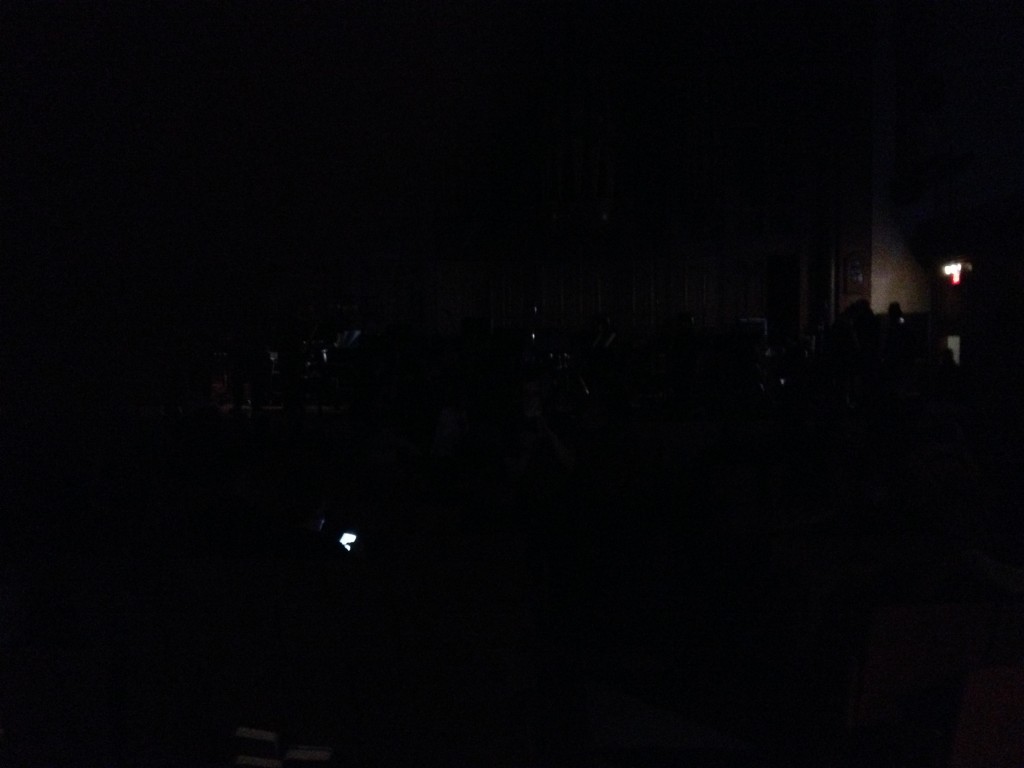
I’m not always convinced of hybrid genres. More often than not, they come across like token cultural gestures strewn together in a slapdash jumble of style and endeavour. Vague whiffs of jazz here, inklings of classical flavours there, and worse, generic multicultural forms everywhere.
The fad started the early 1990’s, and quickly sputtered out when people started to realize that the idea of genre, rather than an artful use of a specific musical style as a mater of depth, doesn’t really hold much water. It’s an empty statement that poses itself as an answer rather than a question.
Now that the novelty has worn off, we seem to be entering a time where explorations of genre and style are more ingrained and organic. In cities all across the world, young composers are no longer interested in the overt idea of cross-genres anymore. In fact, mentioning the term “cross-genre” almost sounds patronising – and so it should.
We live in a country whose musical language transcends diaspora into a new type of musical grammar that naturally includes the experiences of a modern-day Canada. Music like this becomes difficult to pin down and has been one of the things holding it back from a wider popularity – but judging by our increasingly multicultural heritage, this will change.
On Tuesday night, Soundstreams presented a fascinating concert of influences at Trinity St. Paul’s. Unfortunately there were numerous empty seats, and a general sense of scepticism in the room. The couple sitting behind me – after hearing the premiere of Nicole Lizée’s work Hymns to Pereidolia – commented, “I thought this was supposed to be an orchestra – it’s so ‘Jazzy’.” I even saw a couple scuttle out with befuddled scowls across their faces.
It was their loss, because if they had given it a chance, they would have found an evening of stringently original work performed by an ensemble that deserves to be much more widely known than it is.
Let’s start with Nicole Lizée’s piece:
It began with rhythmic air tones in the brass, and quickly picked up the pace with a piano-driven melody that shifted its tempo as if a record was being slowed down and then sped up. On percussion was Ryan Scott, who held his own against the impressive Australian Art Orchestra big band filled out with some Canadian musicians as well.
Lizée is a masterful innovator and her work, Hymns to Pereidolia is dauntlessly intrepid. It takes form in a musical language that is Lizée’s filtered Bach, where she describes “–becomes hazy, begins to mutate and stretch.” In the program notes she adds “Parts of the score are erased, canons are broken, hockets are damaged, and hisses, hums and a warping of material is created. I ‘zoom in’ on very short excerpts (sometimes just a rhythmic or gestural idea) – they form ‘cells’ for a section – and become stretched, melted and otherwise manipulated.”
The piece seemed obsessive as it zoomed into various rhythmic cells and melodic ideas. They were presented in an abstracted manner, like looking into a reflection of oneself in shifting water. The piece included pre-recorded samples, triggered by Lizée positioned in the back. The balance was mostly there, but the brass sometimes over-powered the electronics, which seemed delicate compared to the beasts of burden.
As with many works by Lizée, there is a kind of psychedelia in them. In this piece, she explores the orchestra’s jazziness, and twists it with an LSD vibe that colours the work in unexpected ways.
I must admit I did not get a lot of “Bach” in this work, but in her defence, I don’t think she intended that. It was more about an abstract idea of Bach rather than any concrete measure that informs the piece.
The highlight of the show was AAO’s Passion, championed by Australian composer and pianist Paul Grabowsky. Passion originally premiered in Melbourne in 1997 and was brought over at the request of Soundstreams’ Artistic Director Lawrence Cherney. The piece is collaboratively composed by AAO members Paul Grabowsky, Alister Spence, Niko Schauble, Doug de Vries and John Rodgers.
This was no arrangement or adaptation of Bach’s great St Matthews Passion, but a work which draws upon the same themes, such as the extremes of emotion drawn about the depiction of the final days of Christ.
Again the approach was eclectic and falls in to a jazz, world music, and experimental music wormhole. The system of an improvising orchestra was interesting: Grabowsky would gesture to orchestra members to end improvising sections, then bring in others as he saw fit. It was continually evolving, and also featured intermittent love songs sung by Australian vocalist, Gian Slater. Hers was a pure voice, which had an earthy glow, and helped provide moments of reprieve to the complex cacophony of sound from the orchestra.
Other standouts were found throughout the soloists, which were in a word, spellbinding. Most of them were populated by Toronto’s very own contingent: violinist, Erkki Veltheim, Allison Au, alto sax, Kevin Turcotte and Nicole Rampersaud’s intoxicating trumpets, and Peter Lutek on an earnestly played bassoon.
At the onset of the performance, Cherney mentioned that we should not be surprised if the ghost of Bach jumps up on stage and jams with the musicians themselves. This proved to be prophetic, and about halfway through the performance the power went out, halting the performance in its tracks. Did the spirit of Bach play a grand joke on us after all?
In the pitch-dark church, people rustled around for cell phones to light up the space. Announcements were made – “we will try to continue if the power comes back on.” After the forced intermission, the audience was informed that the entire west end of Toronto was blacked out, and the show could not go on. It was a devastating blow, and would have to serve as the conclusion to an otherwise unusual and beguiling program.

Michael Vincent
- THE SCOOP | Royal Conservatory’s Dr. Peter Simon Awarded The Order Of Ontario - January 2, 2024
- THE SCOOP | Order of Canada Appointees Announced, Including Big Names From The Arts - December 29, 2023
- Ludwig Van Is Being Acquired By ZoomerMedia - June 12, 2023



